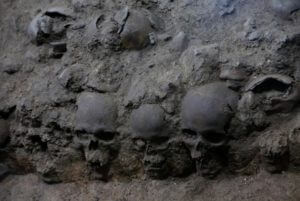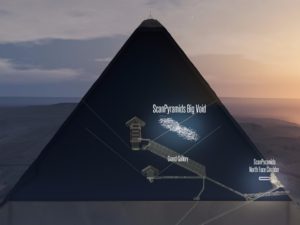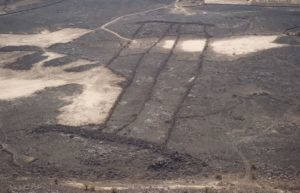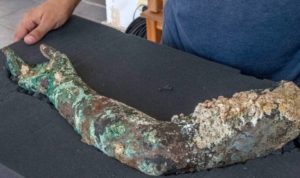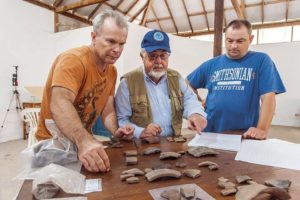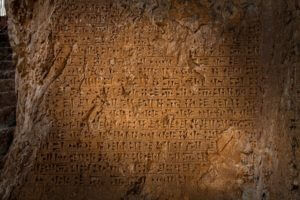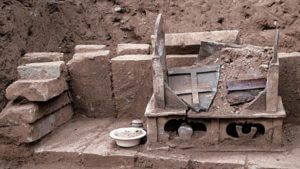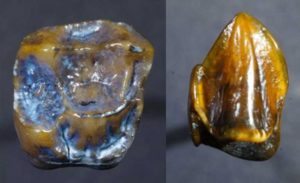
TOP 10 of the most amazing archaeological discoveries in 2017
 6
6
 12. 02. 2018
12. 02. 2018

It is time to look back at 2017 and discuss the numerous archaeological finds that have been made this year and select the 10 most fascinating, memorable ones. This is not a sort by relevance.
1) Skull Tower
The ancient tower of skulls was reportedly recorded by the Spanish Conquistadores. A group of archaeologists has found more than 650 lime-bonded skulls near the 'Templo Mayor', the Aztec capital of Tenochitlan in Mexico. Archaeologists believe that the skulls were part of Huey Tzompantli, a massive tower of skulls, terrifying Spanish conquerors who besieged the city in 1521.
2) Cavity in the Great Pyramid
Scientists using scanning technology based on cosmic rays have discovered a large mysterious "cavity" inside the Great Pyramid of Giza. The mysterious space, 20 meters long, is located just above the Great Gallery and is the first large structure to be discovered inside the pyramid since the 19th century. The estimated age of the pyramid is 4.500 years.
- A place where researchers found a cavity in the Great Pyramid using min. (photo by ScanPyramids / HIP Institute)
3) Scrolls from the Dead Sea - 12th cave
In 2017, researchers announced the discovery of vessels, packaging and bindings related to the Dead Sea Scrolls (manuscripts that contain the oldest known copies of biblical texts) in a cave, the twelfth of the caves near Qumran in Israel. "This amazing excavation is closest to the time we discovered new Dead Sea Scrolls in the last 60 years," said archaeologist Oren Gutfeld of Hebrew University, head of the excavations.
4) Two sunken cities
Tunisia and Italy. Archaeologists have discovered the existence of two flooded ancient Roman cities. Naples, near the cities of Nabeul and Baia, on the Italian coast. The cities disappeared in the 4th century due to seismic and volcanic activity in the Mediterranean.
- A small section of the Book of Giants and the Dead Sea Scrolls
- Clay pots with coils
- Archaeological mission seeks evidence of Neapolis (photo by National Heritage Institute Tunisia / University of Sassar)
5) Stone gates in Saudi Arabia
Researchers have come across more than 400 strange structures in Saudi Arabia that date back thousands of years. It is thought that the ancient stone buildings, which experts call Gates (gates), could be about 7.000 years old. Their purpose remains a mystery. Some of these "gates" are located next to the volcano that spewed basaltic lava.
6) Wreck of the Antikythera
The wreck of the Antikythera ship made fascinating discoveries when scientists found an extensive array of relics and an arm from a bronze statue. This is a great finding, as experts claim that bronze statues are among the rarest artifacts from ancient times. What makes this discovery even more fascinating is that the arm does not belong to any of the statues that have been discovered to this day, which brings us to the question: Where is the rest of the statue?
- Stone Gate in Saudi Arabia - Massive construction seen from the air
- A bronze hand found in a wreck
7) The oldest ceramic fragments in America
The year 2017 brought what many experts consider to be the oldest ceramic fragments discovered on the American continent. A team of experts from Russia and Ecuador acquired artifacts that are thought to be more than 6.000 years old and belonged to the little-studied culture of San Pedro.
8) 4.000 Year old clay plate reveals the location of old cities
Researchers analyzed a 4.000-year-old clay slab created by ancient merchants from the Assyrian Empire, which details the approximate location of eleven long-lost ancient cities. The clay tablets, written in ancient Sumerian cuneiform, contain detailed information on business transactions, accounts, seals, contracts, and even marriage certificates.
- Ceramic pieces obtained by archaeologists (photo by Far Eastern Federal University of Russia)
- Ancient Cuneiform Signs (photo by Shutterstock)
9) Buddha's Remains
Archaeologists have restored the cremated bones hidden in a 1-year-old chamber in China, which is said to belong to Siddhartha Gautam, better known as Buddha, the founder of Buddhism.
10) 9,7 million-year old dentition
Experts were surprised by the discovery of two 9,7 million year old fossilized teeth found near Eppelsheim (Alzey-Worms District, Rhineland-Palatinate, Germany). The teeth belong to a species that probably did not appear in Africa until about 5 million years later. This revolutionary finding can identify Europe as the cradle of humanity and move the beginnings of humanity back millions of years. Until now, it was believed that the cradle of humanity was Africa. The discovery was made by experts from Germany, who said after the discovery: "We do not want to dramatize it too much, but hypothetically we will have to start rewriting the history of mankind."
- A ceramic urn with human remains with an engraved Buddha name
- Two fossil teeth discovered in Eppelsheim (photo by The Museum of Natural History in Mainz)





